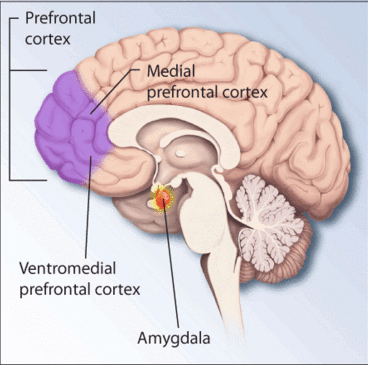|
Pharmacophobia
Medication phobia, also known as pharmacophobia, is a fear of the use of pharmacological treatments. In severe, excessive and irrational cases it may be a type of specific phobia. While lack of awareness by patient or doctor of adverse drug reactions can have serious consequences, having a phobia of medications can also have serious detrimental effects on patient health, for example refusal of necessary pharmacological interventions. Medication phobia can also lead to problems with medication compliance. Medication phobia can also present in parents who are concerned about giving medications to their children, fearing that the medications will do more harm than good. Medication phobia can be triggered by unpleasant adverse reactions to medications which are sometimes prescribed inappropriately or at excessive doses. Lack of awareness of the patient's predisposition to adverse effects (e.g. anxious patients and the elderly) and failure to attribute the adverse effects to the drug ... [...More Info...] [...Related Items...] OR: [Wikipedia] [Google] [Baidu] |
List Of Phobias
The English suffixes -phobia, -phobic, -phobe (from Greek φόβος ''phobos'', "fear") occur in technical usage in psychiatry to construct words that describe irrational, abnormal, unwarranted, persistent, or disabling fear as a mental disorder (e.g. agoraphobia), in chemistry to describe chemical aversions (e.g. hydrophobic), in biology to describe organisms that dislike certain conditions (e.g. acidophobia), and in medicine to describe hypersensitivity to a stimulus, usually sensory (e.g. photophobia). In common usage, they also form words that describe dislike or hatred of a particular thing or subject (e.g. homophobia). The suffix is antonymic to -phil-. For more information on the psychiatric side, including how psychiatry groups phobias such as agoraphobia, social phobia, or simple phobia, see phobia. The following lists include words ending in ''-phobia'', and include fears that have acquired names. In some cases, the naming of phobias has become a word game, of no ... [...More Info...] [...Related Items...] OR: [Wikipedia] [Google] [Baidu] |
Fear Processing In The Brain
Many experiments have been done to find out how the brain interprets stimuli and how animals develop fear responses. The emotion, fear, has been hard-wired into almost every individual, due to its vital role in the survival of the individual. Researchers have found that fear is established unconsciously and that the amygdala is involved with fear conditioning. By understanding how fear is developed within individuals, it may be possible to treat human mental disorders such as anxiety, phobia, and posttraumatic stress disorder. Neuronal fear pathways In fear conditioning, the main circuits that are involved are the sensory areas that process the conditioned and unconditioned stimuli, certain regions of the amygdala that undergo plasticity (or long-term potentiation) during learning, and the regions that bear an effect on the expression of specific conditioned responses. These pathways converge in the lateral amygdala. Long-term potentiation (LTP) and synaptic plasticity that enhance ... [...More Info...] [...Related Items...] OR: [Wikipedia] [Google] [Baidu] |
Pharmacological
Pharmacology is a branch of medicine, biology and pharmaceutical sciences concerned with drug or medication action, where a drug may be defined as any artificial, natural, or endogenous (from within the body) molecule which exerts a biochemical or physiological effect on the cell, tissue, organ, or organism (sometimes the word ''pharmacon'' is used as a term to encompass these endogenous and exogenous bioactive species). More specifically, it is the study of the interactions that occur between a living organism and chemicals that affect normal or abnormal biochemical function. If substances have medicinal properties, they are considered pharmaceuticals. The field encompasses drug composition and properties,functions,sources,synthesis and drug design, molecular and cellular mechanisms, organ/systems mechanisms, signal transduction/cellular communication, molecular diagnostics, interactions, chemical biology, therapy, and medical applications and antipathogenic capabilities. ... [...More Info...] [...Related Items...] OR: [Wikipedia] [Google] [Baidu] |
Specific Phobia
Specific phobia is an anxiety disorder, characterized by an extreme, unreasonable, and irrational fear associated with a specific object, situation, or concept which poses little or no actual danger. Specific phobia can lead to avoidance of the object or situation, persistence of the fear, and significant distress or problems functioning associated with the fear. A phobia can be the fear of anything. Although fears are common and normal, a phobia is an extreme type of fear where great lengths are taken to avoid being exposed to the particular danger. Phobias are considered the most common psychiatric disorder, affecting about 10% of the population in the US, according to the Diagnostic and Statistical Manual of Mental Disorders, Fifth Edition (DSM-5), (among children, 5%; among teens, 16%). About 75% of patients have more than one specific phobia. It can be described as when patients are anxious about a particular situation. It causes a great load of difficulty in life. Patien ... [...More Info...] [...Related Items...] OR: [Wikipedia] [Google] [Baidu] |
Adverse Drug Reactions
An adverse drug reaction (ADR) is a harmful, unintended result caused by taking medication. ADRs may occur following a single dose or prolonged administration of a drug or result from the combination of two or more drugs. The meaning of this term differs from the term "side effect" because side effects can be beneficial as well as detrimental. The study of ADRs is the concern of the field known as ''pharmacovigilance''. An adverse drug event (ADE) refers to any unexpected and inappropriate occurrence at the time a drug is used, whether or not associated with the administration of the drug. An ADR is a special type of ADE in which a causative relationship can be shown. ADRs are only one type of medication-related harm, as harm can also be caused by omitting to take indicated medications. Classification ADRs may be classified by e.g. cause and severity. Cause *Type A: Augmented pharmacologic effects - dose dependent and predictable :Type A reactions, which constitute approximatel ... [...More Info...] [...Related Items...] OR: [Wikipedia] [Google] [Baidu] |
Phobia
A phobia is an anxiety disorder defined by a persistent and excessive fear of an object or situation. Phobias typically result in a rapid onset of fear and are usually present for more than six months. Those affected go to great lengths to avoid the situation or object, to a degree greater than the actual danger posed. If the object or situation cannot be avoided, they experience significant distress. Other symptoms can include fainting, which may occur in blood or injury phobia, and panic attacks, often found in agoraphobia. Around 75% of those with phobias have multiple phobias. Phobias can be divided into specific phobias, social anxiety disorder, and agoraphobia. Specific phobias are further divided to include certain animals, natural environment, blood or injury, and particular situations. The most common are fear of spiders, fear of snakes, and fear of heights. Specific phobias may be caused by a negative experience with the object or situation in early childho ... [...More Info...] [...Related Items...] OR: [Wikipedia] [Google] [Baidu] |
Risk Factor
In epidemiology, a risk factor or determinant is a variable associated with an increased risk of disease or infection. Due to a lack of harmonization across disciplines, determinant, in its more widely accepted scientific meaning, is often used as a synonym. The main difference lies in the realm of practice: medicine ( clinical practice) versus public health. As an example from clinical practice, low ingestion of dietary sources of vitamin C is a known risk factor for developing scurvy. Specific to public health policy, a determinant is a health risk that is general, abstract, related to inequalities, and difficult for an individual to control. For example, poverty is known to be a determinant of an individual's standard of health. Correlation vs causation Risk factors or determinants are correlational and not necessarily causal, because correlation does not prove causation. For example, being young cannot be said to cause measles, but young people have a higher rate of ... [...More Info...] [...Related Items...] OR: [Wikipedia] [Google] [Baidu] |
Psychotropic Drugs
A psychoactive drug, psychopharmaceutical, psychoactive agent or psychotropic drug is a chemical substance, that changes functions of the nervous system, and results in alterations in perception, mood, consciousness, cognition or behavior. These substances may be used medically, recreationally or spiritually to a. Purposefully improve one’s perceived performance b. Alter one's consciousness (such as with entheogens for ritual, spiritual or shamanic purposes) or c. For research. Some categories of psychoactive drugs - which are believed, by some, to have therapeutic value - may be prescribed by some physicians and other healthcare practitioners. Examples of medication categories that may contain potentially beneficial psychoactive drugs include, but are not limited to: # Anesthetics # Analgesics # Anticonvulsants # Anti-Parkinson’s medications # Medications used to treat Neuropsychiatric Disorders a. Antidepressants b. Anxiolytics c. Antipsychotics d. S ... [...More Info...] [...Related Items...] OR: [Wikipedia] [Google] [Baidu] |
Phobia
A phobia is an anxiety disorder defined by a persistent and excessive fear of an object or situation. Phobias typically result in a rapid onset of fear and are usually present for more than six months. Those affected go to great lengths to avoid the situation or object, to a degree greater than the actual danger posed. If the object or situation cannot be avoided, they experience significant distress. Other symptoms can include fainting, which may occur in blood or injury phobia, and panic attacks, often found in agoraphobia. Around 75% of those with phobias have multiple phobias. Phobias can be divided into specific phobias, social anxiety disorder, and agoraphobia. Specific phobias are further divided to include certain animals, natural environment, blood or injury, and particular situations. The most common are fear of spiders, fear of snakes, and fear of heights. Specific phobias may be caused by a negative experience with the object or situation in early childho ... [...More Info...] [...Related Items...] OR: [Wikipedia] [Google] [Baidu] |
Specific Phobia
Specific phobia is an anxiety disorder, characterized by an extreme, unreasonable, and irrational fear associated with a specific object, situation, or concept which poses little or no actual danger. Specific phobia can lead to avoidance of the object or situation, persistence of the fear, and significant distress or problems functioning associated with the fear. A phobia can be the fear of anything. Although fears are common and normal, a phobia is an extreme type of fear where great lengths are taken to avoid being exposed to the particular danger. Phobias are considered the most common psychiatric disorder, affecting about 10% of the population in the US, according to the Diagnostic and Statistical Manual of Mental Disorders, Fifth Edition (DSM-5), (among children, 5%; among teens, 16%). About 75% of patients have more than one specific phobia. It can be described as when patients are anxious about a particular situation. It causes a great load of difficulty in life. Patien ... [...More Info...] [...Related Items...] OR: [Wikipedia] [Google] [Baidu] |



.jpg)